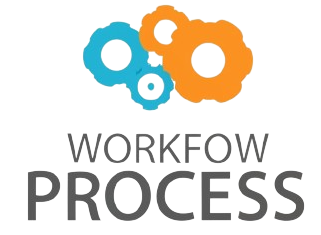The future of agentic AI and its governance is a critical topic as artificial intelligence continues to evolve rapidly. Agentic AI refers to autonomous systems capable of making decisions and taking actions independently, often with minimal human intervention. As these systems integrate deeper into sectors like healthcare, finance, and transportation, ensuring they operate ethically, safely, and transparently becomes paramount. This article explores emerging trends in agentic AI technology and the strategies shaping AI governance frameworks. From advances in explainability to regulatory challenges, understanding these dynamics helps stakeholders prepare for the opportunities and risks posed by increasingly autonomous AI agents. By examining the intersection of innovation and oversight, we can better navigate the complex landscape of AI development and deployment in the coming years.
Advancements in autonomous agent capabilities
Recent progress in machine learning, reinforcement learning, and natural language processing has significantly enhanced the autonomy of agentic AI systems. These advancements enable AI agents to understand complex contexts, plan long-term strategies, and adapt to new environments with minimal supervision. For example, multi-agent cooperation models allow multiple AI systems to coordinate actions, leading to improved efficiency in logistics or disaster response. Another notable trend is the integration of ethical decision-making frameworks within agents, allowing them to weigh trade-offs and consequences proactively. This shift not only promotes smarter AI behaviors but also introduces new dimensions of accountability as agents act on behalf of humans in increasingly consequential scenarios.
Explainability and transparency as governance pillars
Explainability—the ability of AI systems to provide understandable justifications for their decisions—is becoming a cornerstone of AI governance. As agentic AI assumes greater responsibilities, stakeholders demand transparency to build trust and identify potential biases or errors. Techniques such as saliency mapping, rule extraction, and interpretable surrogate models are evolving to bridge the gap between complex AI processes and human comprehension. Regulatory bodies worldwide are integrating explainability into compliance frameworks, requiring organizations to demonstrate how autonomous decisions are reached. Ultimately, transparent agentic AI not only protects users but also facilitates better oversight and continuous improvement in AI behavior.
Global regulatory trends and collaborative governance
The governance of agentic AI is no longer confined to isolated national policies but is increasingly shaped by international cooperation. Governments, industry consortia, and standards organizations are working together to establish unified principles around ethical AI, accountability, and safety protocols. Emerging frameworks emphasize risk assessment, impact audits, and enforceable guidelines tailored to autonomous systems. A key feature of these efforts is balancing innovation with risk mitigation to prevent misuse or unintended harms. For instance, the European Union’s proposed AI Act outlines detailed restrictions and transparency requirements specifically targeting high-risk autonomous systems. This global movement underscores the need for proactive and adaptive governance mechanisms that can keep pace with technological advancements.
Future outlook: integrating AI governance into AI design
Looking ahead, the most effective strategies for managing agentic AI will involve embedding governance principles directly into AI system design rather than treating oversight as an afterthought. This approach, often termed “governance by design,” seeks to incorporate ethical constraints, safety checks, and explainability modules at the developmental stage. Advances in AI auditing tools and real-time monitoring systems will further enable dynamic governance, allowing stakeholders to respond quickly to emergent issues. Moreover, education and interdisciplinary collaboration between AI developers, ethicists, and lawmakers will be critical to shaping responsible AI ecosystems. The convergence of technological innovation and governance foresight is essential to harness the benefits of agentic AI while mitigating its potential risks.
Conclusion
Agentic AI represents a transformative frontier with vast potential to revolutionize industries and daily life. However, its autonomous nature demands rigorous governance strategies that evolve alongside technological advances. This article has highlighted the trajectory of enhanced agent capabilities, the growing importance of explainability, and the shift towards international regulatory collaboration. Importantly, it underscored that governance must move beyond reactive policies to integrate controls directly into AI design and operations. Together, these trends illustrate a future in which innovation and oversight work hand in hand, ensuring agentic AI remains a trusted tool aligned with societal values. As stakeholders continue to address ethical, legal, and operational challenges, a balanced and proactive approach will be fundamental to realizing the full promise of autonomous AI.
